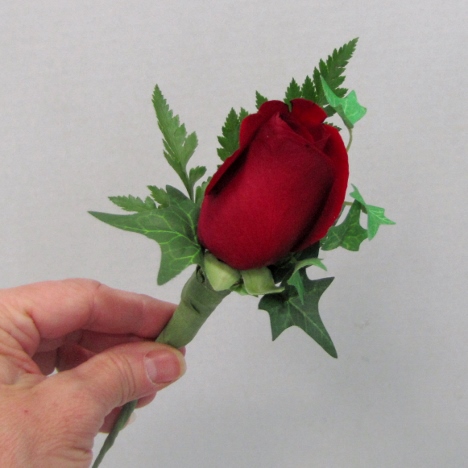make a rose boutonniere
When making wedding boutonnieres, you may have to support your leaves with taped wire to maintain the shape of your design.
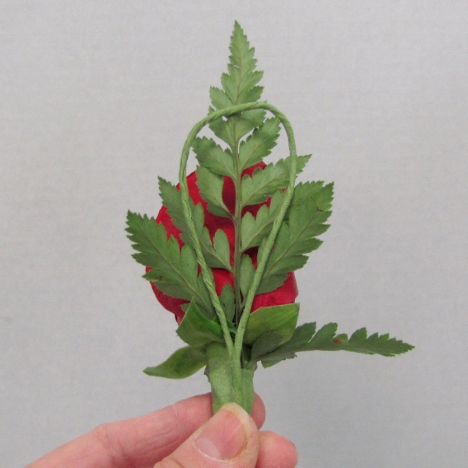
Place the looped wire directly behind the leather leaf fern and tape to the stem of the boutonniere.
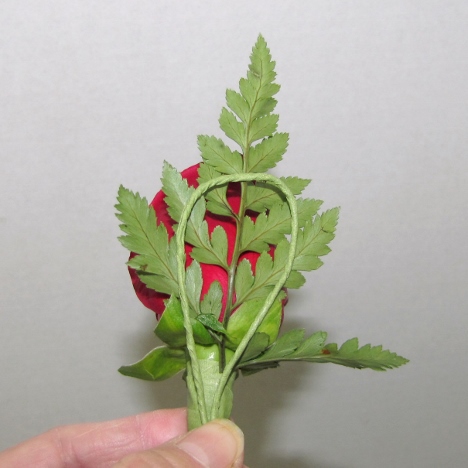
Don't go completely down the stem - you will cut off excess wires so the bottom of the boutonniere doesn't become too thick and unmanageable.
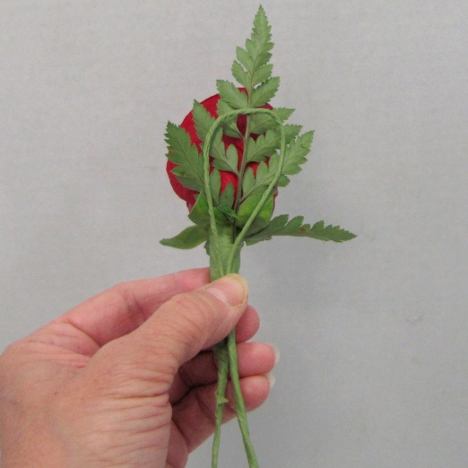
Greenery should compliment the rose - not overpower it. Peeking out from the sides is better than a large mass of greens crowded around the focal flower.
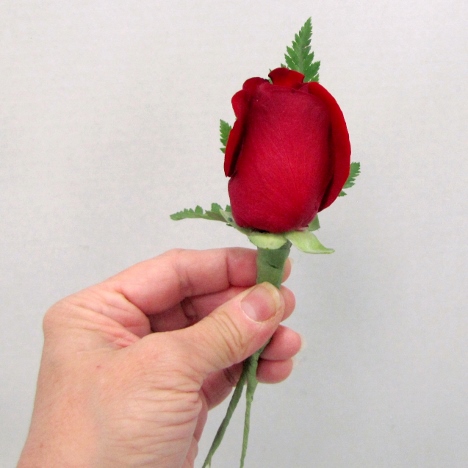
As you can see from a lateral view, the wire pushes the leaf forward and holds it into place.
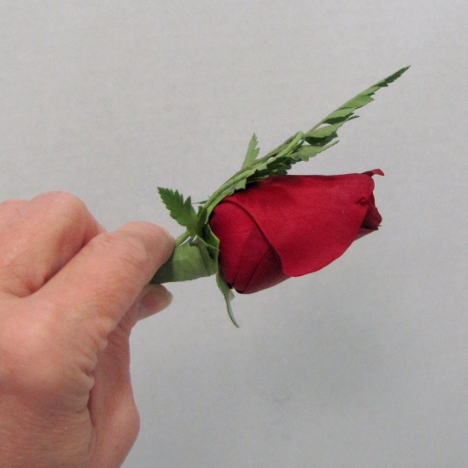
Trailing ivy is a lovely accent when you are making boutonnieres and corsages. Ivy should be soaked in a tepid bath before using in cut flower work or bouquets.
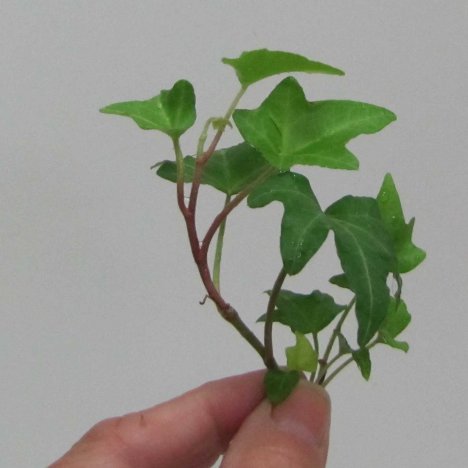
I hook a wire over the stem between the ivy laterals.
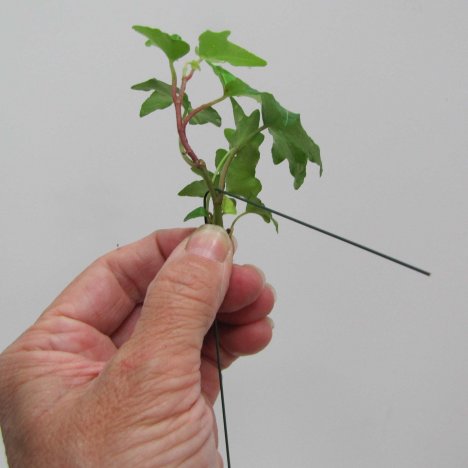
Fold down the wire and pull it down gently, making sure it is connected with the ivy stem.
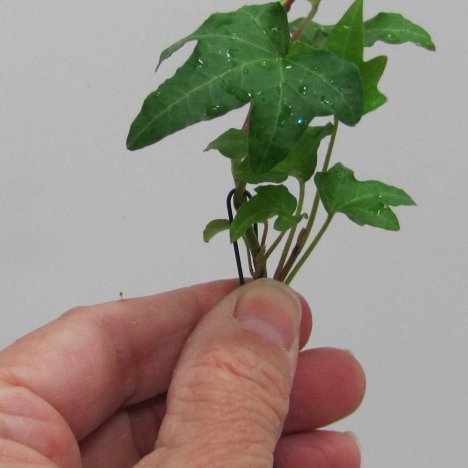
Tape the wired stem with corsage tape.
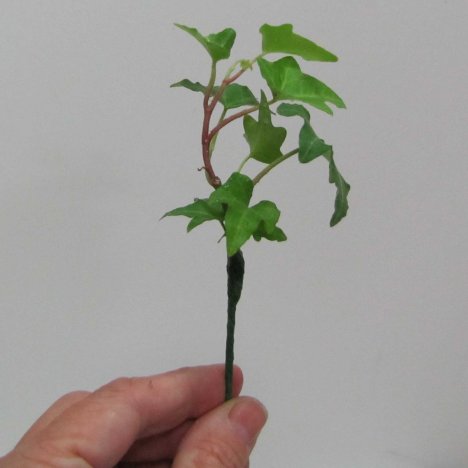
Take a critical look at the ivy and see if it compliments your design.
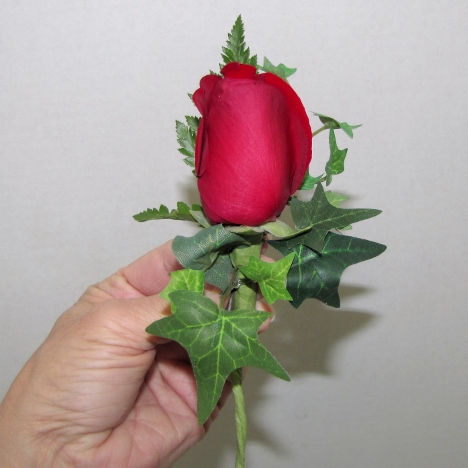
I spray ivy and other fresh greens with Leafshine sealant. Florists use large cans of this, but I sell a smaller can that works very well for a single DIY wedding.
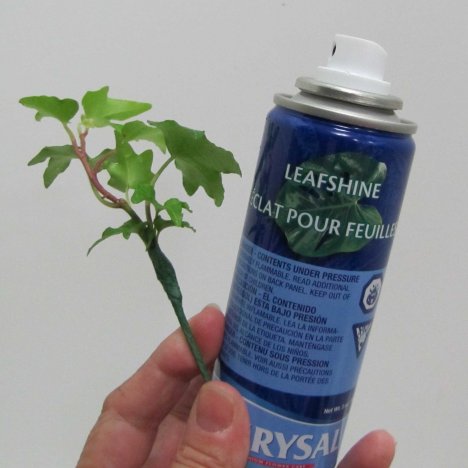
As I'm making this boutonniere, I have to decide if there is too much greenery.
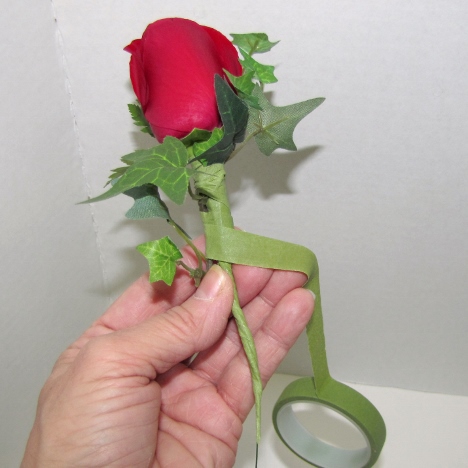
I think the bottom leaves are a little much and kind of overwhelm the design, so I clip those leaves off.
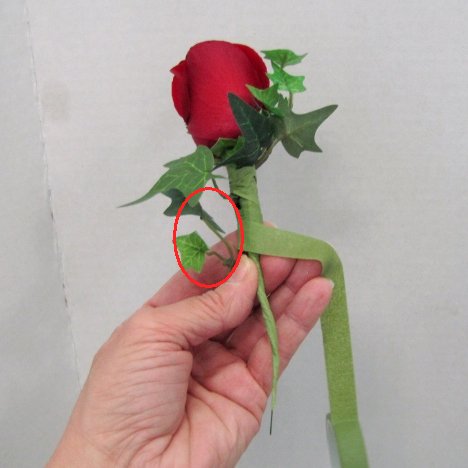
This leaves me with a tight cluster of leaves nestled under the rose head, which is the look I desire. Remember - more isn't always better!
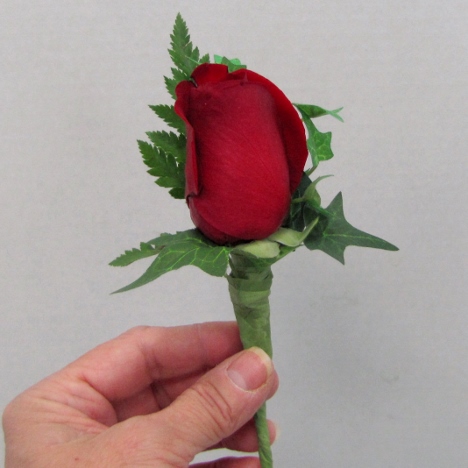
Making boutonnieres requires a critical eye on how much greenery is enough - and how much is too much. I'm going to add another single leather frond to the back of this design.
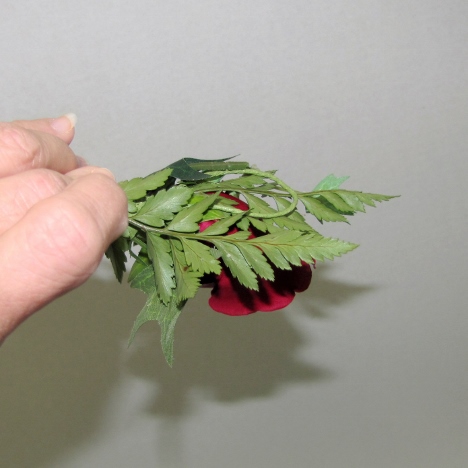
See how the greens look full and lush around the rose head, yet not overwhelmingly splayed out in all directions? Greenery always is meant to compliment - not overpower the design.
Now I'm ready to add a polished finish to the boutonniere stem.
